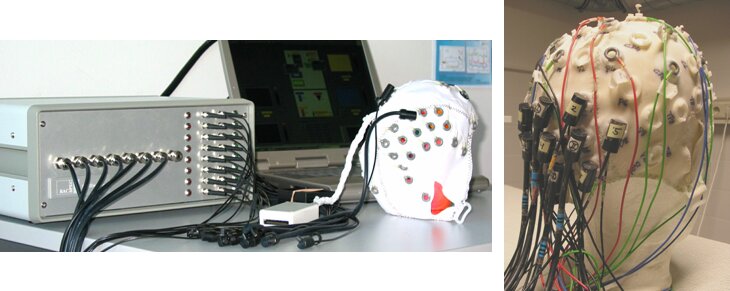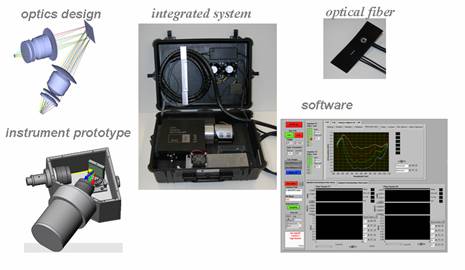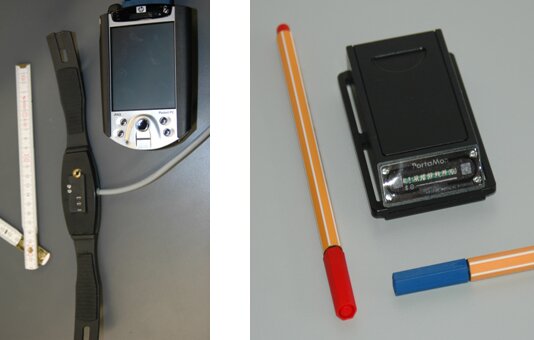Instrument Development
Instrument Development
New methods require the development of new instruments, which includes:
- optics design / optical ray tracing
- optoelectronics
- data acquisition hardware and software
- software for instrument control
- software for data evaluation
- and intensive testing of the underlying algorithms
Examples of the recent instruments are given below:
We developed spatially-resolved, broad-band spectroscopy for the quantification of tissue absorption coefficients µa(l) and a subsequent calculation of tissue chromophores. In the figure attenuation spectra are shown for different source detector separation with the characteristic signatures of water and haemoglobin. Tissue deoxygenation during cuff occlusion results in changes of the spectra. The µa – spectra on the right are based on an analytical model for the slope in attenuation with respect to the distance. The abundance of measured spectral data allows the underlying hypotheses of the model to be tested.

NIR Haemoglobin Imager:
A multi-channel near-infrared spectroscopy is designed for the mapping of haemoglobin changes in deep tissues like human brain or muscle. The system combines 8 detector channels and 16 – 24 laser sources, with optical fibers arranged in a grid which can be combined e.g. with EEG recordings.
Example data can be found in the sections NIR Spectroscopy of Brain and Spectroscopy of Muscle and Skin.

Brain Imaging System for the Exposed Cortex:
Over the last years we developed a dedicated imaging system for the mapping of the exposed cortex. The simultaneously use of reflectance spectroscopy and laser-speckle imaging is exploited for haemoglobin and blood flow imaging.

Portable Muscle Monitor:
While the above mentioned broadband system is the best choice for a detailed analysis of tissue spectra, its size and weight limits its widespread use. We designed a portable, spatially – resolved system (left figure) dedicated for muscle application in sports and exercise physiology. A commercial version with battery operation and Bluetooth connectivity is designed and marketed by Artinis Medical Systems B.V.
